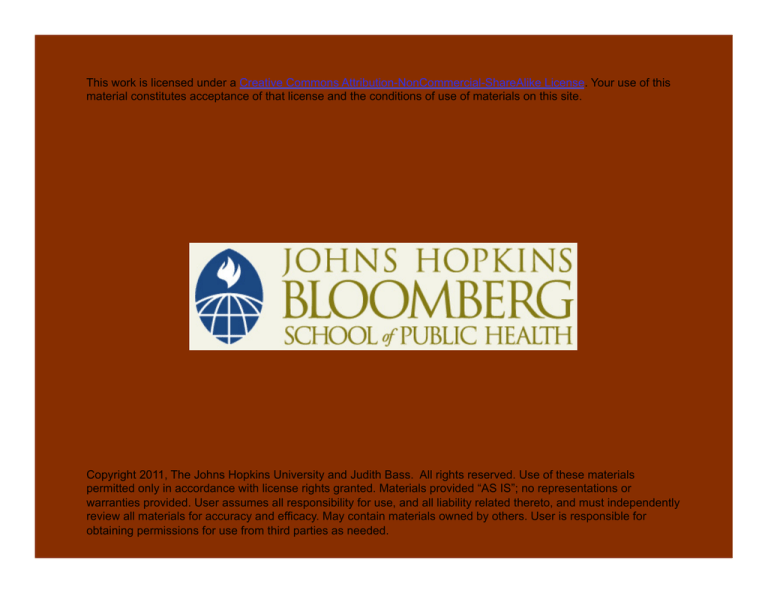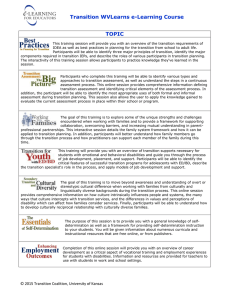
This work is licensed under a Creative Commons Attribution-NonCommercial-ShareAlike License. Your use of this
material constitutes acceptance of that license and the conditions of use of materials on this site.
Copyright 2011, The Johns Hopkins University and Judith Bass. All rights reserved. Use of these materials
permitted only in accordance with license rights granted. Materials provided “AS IS”; no representations or
warranties provided. User assumes all responsibility for use, and all liability related thereto, and must independently
review all materials for accuracy and efficacy. May contain materials owned by others. User is responsible for
obtaining permissions for use from third parties as needed.
Section C
Variations in Expression
Inuit Suicide Typologies
Organic or quasi-organic model
- Psychological vulnerability
- Physiologic correlates
Social change and social disruptions
- Modernization/rapid social change
- Social disorganization; disruption to traditional structure
- Coping structure and mechanisms disrupted
Socio-psychological model
- Risk factor approach: parental drinking/drug use; use of drugs/
solvents; personal mental health history; friend who
attempted/committed suicide
Photo by Sheila Steele. Creative Commons BY-NC-SA. Retrieved from http://
www.flickr.com/photos/sheila_steele/131175001/sizes/m/
3
Inuit Suicide Typologies
Organic or quasi-organic model
- Psychological vulnerability
- Physiologic correlates
Social change and social disruptions
- Modernization/rapid social change
- Social disorganization; disruption to traditional structure
- Coping structure and mechanisms disrupted
Socio-psychological model
- Risk factor approach: parental drinking/drug use; use of drugs/
solvents; personal mental health history; friend who
attempted/committed suicide
Photo by Sheila Steele. Creative Commons BY-NC-SA. Retrieved from http://
www.flickr.com/photos/sheila_steele/131175001/sizes/m/
4
Variation in Presentation of Panic Attacks
Prominent symptoms
- US: palpitations and shortness of breath
- Khmer refugees: dizziness and neck tension
- Nigeria: extreme “heat” in the head
- Latin America: limb trembling—“nerves”
5
Indigenous Terms and Idioms
Burmese in Thai refugee camps
- Described symptoms of numbness, “thinking too much,” feeling
“hot under the skin”
Zimbabwe kufungisisa
- Syndrome of “thinking too much”—attributed to supernatural
causes and social stressors
Culture-bound anxiety syndromes
- Amok—culturally shaped beliefs (Southeast Asia)
- Ataque de nervios—culturally shaped variations of
psychopathology (Latin America)
6
Indigenous Terms and Idioms
Burmese in Thai refugee camps
- Described symptoms of numbness, “thinking too much,” feeling
“hot under the skin”
Zimbabwe kufungisisa
- Syndrome of “thinking too much”—attributed to supernatural
causes and social stressors
Culture-bound anxiety syndromes
- Amok—culturally shaped beliefs (Southeast Asia)
- Ataque de nervios—culturally shaped variations of
psychopathology (Latin America)
7
Etic vs. Emic Approach
Etic: universality approach
- Focus on differences across cultures while assuming a universal
underlying phenomenon
Emic: relativist approach
- Mental health and distress is culture specific and can only be
understood within the specific cultural context
8
Before Next Class
How might we use qualitative methods to get at these issues?
9





